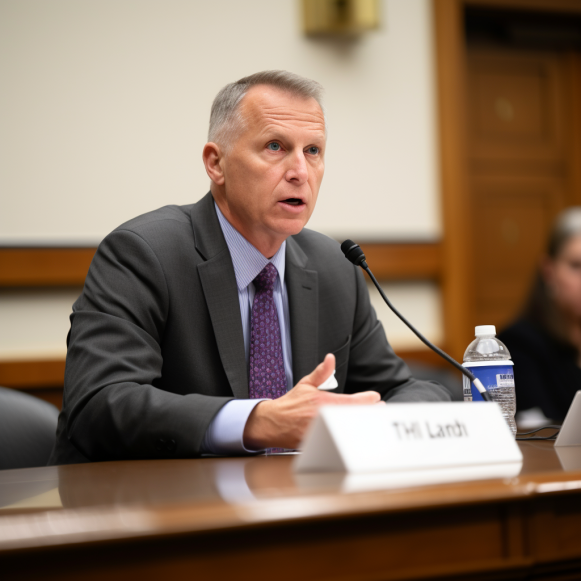Feds hope to cut sepsis deaths by hitching Medicare payments to treatment stats

Don Smith recalls waking up in an intensive care unit after 13 days in a medically induced coma. His wife and daughter were at his bedside, and he couldn’t believe it had only been a day since he’d gone to the ER with foot pain.
Smith stated that his wife “slowly started filling me in” on the surgery, coma, and ventilator. The throbbing in his foot had been a warning sign of a major problem.
“When you hear someone say a person died of infection, that’s sepsis,” explained Smith, 66, of Colorado Springs, who went to the ER shortly before Christmas 2017. He eventually spent nearly two months in the hospital and a rehab center after multiple surgeries to remove infected tissue and, later, seven toes.
Sepsis, the body’s overreaction to infection, affects 1.7 million adults in the United States each year. It is caused by fungal, viral, or bacterial infections, similar to what Madonna experienced this year, though the singer never revealed whether she was diagnosed with sepsis. Even a few hours of treatment delay can reduce a patient’s chances of survival. However, sepsis can be difficult to diagnose because some patients do not exhibit typical symptoms such as fever, rapid heart rate, or confusion.
A Biden administration rule, finalized in August, raises the ante for hospitals by establishing specific treatment metrics that must be met for all patients with suspected sepsis, potentially saving some of the 350,000 adults who die from infections each year. Children are also affected, with some estimates estimating that 75,000 are treated for sepsis each year, with up to 20% of them dying. Failure to meet the requirements could result in hospitals losing millions of dollars in Medicare reimbursement for the year.
Nonetheless, because the rule applies broadly, it has sparked criticism for its lack of flexibility.
Efforts to reduce sepsis deaths are appreciated, but “where it gets controversial becomes ‘Is this the best way to do it?'” said Chanu Rhee, a Harvard Medical School infectious disease physician and associate professor of population medicine.
Blood tests must be performed quickly in order to look for markers that may indicate sepsis. Antibiotics must also be started within three hours of identifying a possible case, according to the regulations. The quality measures, known as the Severe Sepsis/Septic Shock Early Management Bundle, also call for additional tests and intravenous fluids to prevent dangerously low blood pressure.
Medicare regulators wrote in the proposed rule, issued in May, that the treatments have resulted in “significant reductions in hospital length of stay, re-admission rates, and mortality” since the guidelines were implemented in 2015 under a requirement that hospitals simply report whether they were following them or not.
“These are core things that everyone should do every time they see a septic patient,” said Steven Simpson, a critical-care physician and professor of medicine at the University of Kansas, as well as the chairman of the Sepsis Alliance, an advocacy group funded by individuals, governments, and the health-care industry.
The final rule expands on the previous effort. According to the Biden administration, an average of 57% of patients nationwide received care that met the guidelines in 2021, with the most compliant averaging 80%.
However, beginning in the fall of 2024, hospitals will be required to go beyond simply reporting on the measures and meet the specific treatment benchmarks that will be added to Medicare’s Hospital Value-Based Purchasing Program.
“Previously, even if you reported 0% compliance, you didn’t lose your money. “Now you have to do it,” Simpson said.
Failure to meet these and other patient-safety standards could be expensive: Smaller hospitals could lose “hundreds of thousands” of dollars in Medicare reimbursements each year, while large institutions could lose “millions,” according to Akin Demehin, the American Hospital Association’s senior director of quality and patient safety policy.
The hospital association objected to the final rule, writing to the Centers for Medicare & Medicaid Services in June that the recommended treatments had not kept up with evolving science and that their emphasis on prompt antibiotic administration for all suspected cases “has the high potential to lead to excessive use.” This could exacerbate antibiotic resistance.
Other professional medical associations, including the Infectious Diseases Society of America, have expressed similar concerns. It was proposed in a 2020 paper to change the metrics to target only patients with septic shock, the most severe form of the condition, rather than all suspected sepsis cases. In addition, the society argued that physicians require more flexibility.
Furthermore, there is disagreement about whether widely implementing the treatment regimen will save lives.
Rhee raised this issue in JAMA earlier this year. Rhee cited four studies, including one he led, in an opinion piece he co-wrote, showing that broad-spectrum antibiotic use increased after the sepsis bundle was introduced eight years ago, but there was little or no change in patient outcomes.
“Unfortunately, we do not have good evidence that implementation of the sepsis policy has led to an improvement in sepsis mortality rates,” he added.
Another study takes a different approach. It was discovered that sticking to the treatments reduced deaths by about 5.7% among those who received them. In their proposed rule, Medicare officials cited the study and its findings.
Rhee is skeptical that the drop was caused solely by the treatment protocols.
According to Simpson of the Sepsis Alliance, there is enough evidence that the effort to follow the treatment standard resulted in improvements, and he is eager for more.
“It is quite clear that this works better than what was present before, which was nothing,” he said. If the current sepsis mortality rate could be reduced “by even 5%, we could save a lot of lives.”
All parties involved agree that raising awareness is critical, not only among medical teams but also among patients. Crystal Waguespack, 41, a nurse in Baton Rouge, Louisiana, said she was aware of sepsis but didn’t apply it to her own symptoms when she began experiencing severe pain two weeks after an operation in 2018.
“I never checked to see if I had a fever,” she admitted, nor did she notice her increased heart rate.
She did, however, speak up. Waguespack claimed that the severe pain, which occurred on a weekend when her regular doctor was unavailable, prompted her to consult with a physician unfamiliar with her case, who told her that the pain was normal and that she was just worried. So she went to the emergency room.
“I did not take no for an answer, and I think that saved my life,” she went on to say.
Doctors discovered spinal fluid leaking and a surgery-site infection when she arrived at the hospital. She was in the hospital for 14 days, battling sepsis, meningitis, and a heart infection.
Her experience taught her the following lessons: “Could this be sepsis?” advocates always ask. And don’t put it off.
Smith wishes he had gone straight to the hospital rather than first seeing a foot specialist.
“I went to a foot doctor because my foot hurt,” Smith said. “However, a foot doctor is not an infectious disease specialist.” You must get to a location where various types of doctors can examine you. That is referred to as a hospital.”





